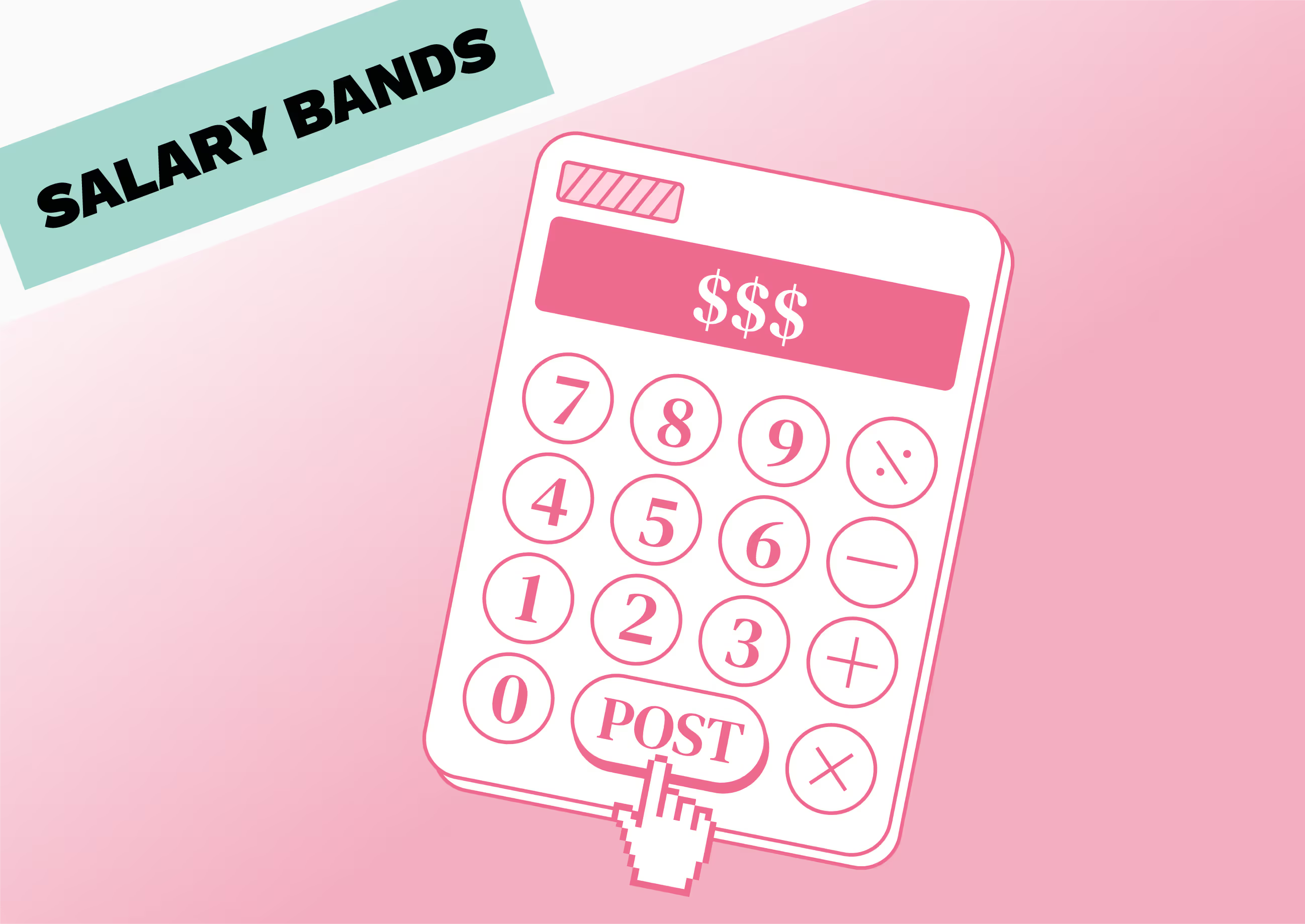The Sweet Spot: How to find the right width for your salary bands
Picture this: you're a master chef, carefully balancing the ingredients to create the perfect dish.
Well, designing salary bands is no different! It's all about finding that sweet spot—the ideal width that ensures fairness, attracts talent, and supports your organization's goals.
So, grab your apron and get ready to discover the secret recipe for finding the perfect width for your salary bands.
In this article we will cover:
- Quick review on salary bands 101
- How wide should your salary range be?
- Should your salary ranges overlap?
Understanding Salary Bands
Before we dive into the details, let's quickly remind ourselves why salary bands are a crucial ingredient in the compensation kitchen.
Salary banding provides a structure for categorizing jobs and setting appropriate pay ranges.
If you need a review our salary bands 101 article is the perfect solution.
Like organizing your spice rack, salary bands bring order and consistency to compensation practices.
Salary banding has many benefits for your organization like:
- Ensuring fairness
- Supporting internal equity
- Helping to attract and retain top talent
How wide should your salary range be?
When it comes to salary bands, finding the right width is like finding the perfect balance—a bit like Goldilocks seeking the "just right" porridge.

If the bands are too wide, you risk losing clarity and compromising internal equity. On the other hand, if they're too narrow, you limit flexibility and hinder career growth.
So what to do?
Figures Tip: What we commonly observe on the market is to have ranges at +/- 10%.
There are advantages and downfalls for both wide and narrow salary ranges.

A best-in-class approach would be to have ranges becoming wider as you move to higher levels.
Why? It will most likely take more time to move from a Senior to Staff level than from Junior to Intermediate level; hence you want people to have more room for evolution within your Senior level than the Junior one.

Should your salary ranges overlap?
Range overlap happens when a salary range overlaps with one above or below.
Ranges overlap is not mandatory, yet it gives you more flexibility when managing different use cases:
→ Superstar employees: Some employees will be moving very quickly from one level to the other; they probably won’t have time to use the room for evolution within their level before switching to the next one. In this situation, the overlap of ranges will avoid huge increases that may be too impactful financially for you as the employer while providing a compensation evolution that remains engaging for the employee.
→ Slow promotion: Some companies might be very demanding before granting promotion to a higher level; employees will remain at the same level for a while, and you’ll be able to reward their performance pushing them to the high end of their current level range, and when they’ll be promoted to the next level they will smoothly settle close to the midpoint of their new range. It’s very likely that their performance is not equal to a beginner's at this new level; the midpoint is then totally relevant.
What are the pros and cons of overlapping salary ranges?
Pros of having overlap in salary ranges
- More flexibility overall
- More room for people who might not be able to (or might not want to) go one level above
Cons of having overlap in salary ranges
- Employee one level below paid like one level above
- Someone at the very end of a salary range might not make a big jump come promotion time because their salary is already at the bottom of the range above
To conclude & further reading
Just like a skilled chef, finding the right width for your salary bands takes a blend of art and science.
By striking the perfect balance—neither too wide nor too narrow—you create a compensation structure that supports fairness, attracts talent, and drives organizational success.
So, go ahead, find your sweet spot, and savor the rewards it brings!
.avif)




